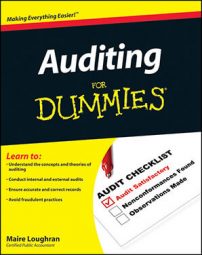When performing due diligence in an audit, you have to address all relevant events that take place after the balance sheet date but before you issue your report. These are called subsequent events and auditors classify such events as Type I or Type II.
To identify Type I or Type II events, you have to do some investigative work by checking with the following people:
Company management: This is your best source of information. Ask whether there have been any unusual adjustments or any resolutions on items that were pending as of the balance sheet date. Request that management respond in writing with a management representation letter, which states whether any events have occurred subsequent to the balance sheet date that would require adjustment to, or disclosure in, the financial statements. The client prepares this letter on its letterhead, and the chief executive and financial officers sign it. (You can offer guidance on how to prepare the letter if needed.)
Legal counsel: If your client had any ongoing litigation at the balance sheet date, check the status with its attorney.
Ask the client for interim financial statements (statements that reflect less than a 12-month period) it has prepared since the balance sheet date. For example, if the company has a fiscal year-end of April 30, it may have interim statements prepared as of May 31, June 30, and so on. Compare the interim statements to your prior-period statements to see if anything weird is showing up.
For example, if a business disposes of a segment resulting in gains or losses, it should have a line item on the income statement that reads “Income from continuing operations.” That’s your clue that you have a subsequent event to investigate. You can also glean this type of information from minutes of meetings in which shareholders approve such a sale.
When you identify a subsequent event that requires disclosure, your audit firm will consider dual-dating the audit report. You generally date the report at the completion of your fieldwork (your auditing work done on the client’s premises). However, you can also reference the date of the subsequent event. For example, say you finish your fieldwork on March 10 and the client sells a segment of its business on April 30, which is addressed in Note #2 to the financial statements. Here’s how you might date the report: “March 10, 20XX, except with respect to the matters discussed in Note #2, as to which the date is April 30.”

